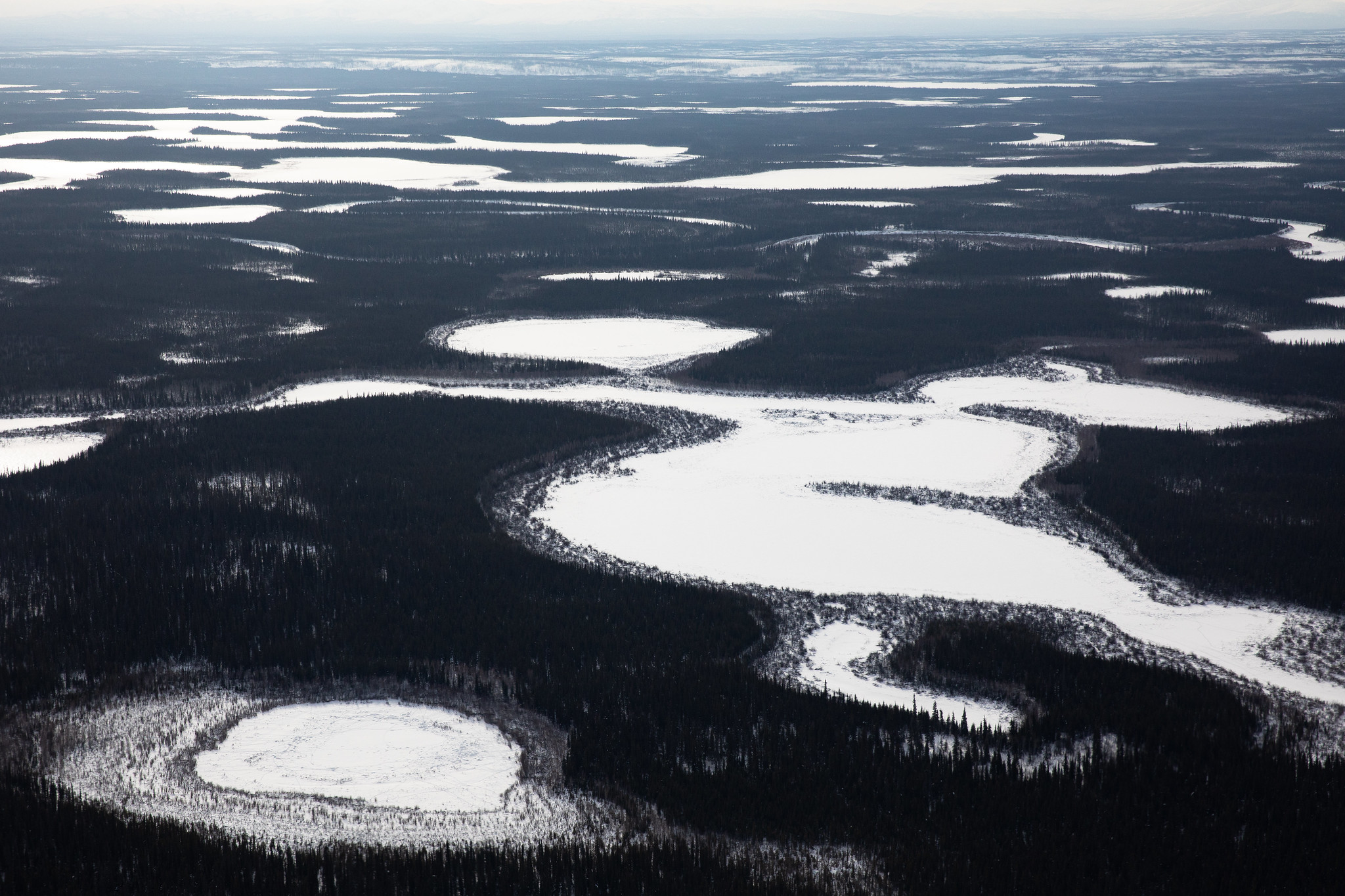Alaska’s Yukon Flats region is seeing major climate-driven changes — and new oil exploration
The region, at roughly the midpoint of the Yukon River, is an ecologically important area.

Temperatures are rising, lakes are shrinking, large wildfires have become more frequent and some animals species are moving in from the south.
Those climate change transformations and more are detailed in a recent report issued by the University of Alaska Fairbanks about the Yukon Flats region, an ecologically important area straddling the Arctic Circle in northeastern Alaska, at about the midpoint of the 2,000-mile Yukon River.
Average annual temperatures have risen 4 degrees Fahrenheit since the 1950s, with the biggest increase — 8.8 degrees Fahrenheit — occurring in winter, according to the report, authored by experts at UAF’s International Arctic Research Center, the Yukon Flats National Wildlife Refuge, with consultation by the Council of Athabascan Tribal Governments.
That warming has cascading effects in the 13,500-square-mile region.
Permafrost is increasingly vulnerable to thaw, especially the areas in the Yukon Flats foothills, where there is yedoma, an especially ice-rich and old type of permafrost. In turn, permafrost thaw is transforming wetlands, draining some lakes and creating new ones, the report said.
For wetlands that are important to birds, the changes have tipped what was a delicate balance between brackish water and freshwater, the report said.
“When more water evaporates from brackish wetlands than flows into them, the salt concentration increases to the point where soils can become too rich for existing plants and insects to tolerate,” the report said. The increased warming can cause wetlands to become too enriched or dry out completely, it said. “Changes in hydrology, permafrost, precipitation and temperature have already caused many wetlands on Yukon Flats to dry up since the 1980s. Breeding waterbirds that fed on the previously abundant plants and insects can be negatively impacted.”
Riverbank erosion is severe in some areas, and the amount of water flowing in winter and spring has increased since the 1970s. Large fire seasons have become more frequent in the Yukon Flats over the last 30 years; the frequency of fire seasons with more than 250,00 acres of burn in the region has quadrupled since 1988, the report said.
For fish in the river systems, warming has taken a toll. Salmon runs have faltered and the salmon themselves are smaller, the report said. Lake drainage driven by permafrost thaw has reduced fish habitat in some areas.
For wildlife, warming has brought mixed effects. There are signs that some species are moving north and becoming more plentiful: moose numbers doubled from 2010 to 2018, for example, and ruddy ducks, once uncommon in Interior Alaska, are now nesting in the Yukon Flats region, where lakes are ice-free earlier in the season. For Dall’s sheep, however, increased frequency of icing events caused by winter warming and rain pose dangers; the animals now contend more often with coats of ice covering the vegetation they eat, the report said.
Amid the changes, there is some preliminary exploration for oil and gas in the Yukon Flats.
Doyon Corp., the regional Native corporation, has teamed with Hilcorp Energy Company on a project to explore the region’s oil and gas potential. Under an agreement signed in 2019, Hilcorp has authorization for exploration work on about 1.6 million acres of Yukon Flats territory where Doyon owns the mineral rights.
The on-site work began last summer.
This summer’s project is the drilling of what was planned as 15 stratigraphic wells — wells that go down to about 250 feet to provide information on soils and geology but do not reach into the hydrocarbon-bearing zones.
The program is intended “to better understand the geology of the Yukon Flats basin,” Hilcorp spokesman Luke Miller said by email.
“We are working closely with Doyon and nearby communities to minimize impacts, including transporting the portable drilling rig via helicopter. We remain optimistic about the resource potential of the Yukon Flats basin and the local economic activity it could generate if successful,” Miller said.
However, there is pushback in the region to the exploration plan
The tribal government in Fort Yukon, the Gwichyaa Zhee Gwich’in government, passed a resolution last year in opposition to the program. The resolution, passed shortly after Doyon announced its agreement, said the tribal government was not consulted and that tribal council members “did not consent to the proposed activities in their homeland.”
“Oil and gas exploration activity could have major impacts on the air, lands, water, people, and wildlife of the interior of Alaska as well as the Yukon River basin,” the resolution said.
Doyon shareholders who oppose the program have also established a Facebook group.